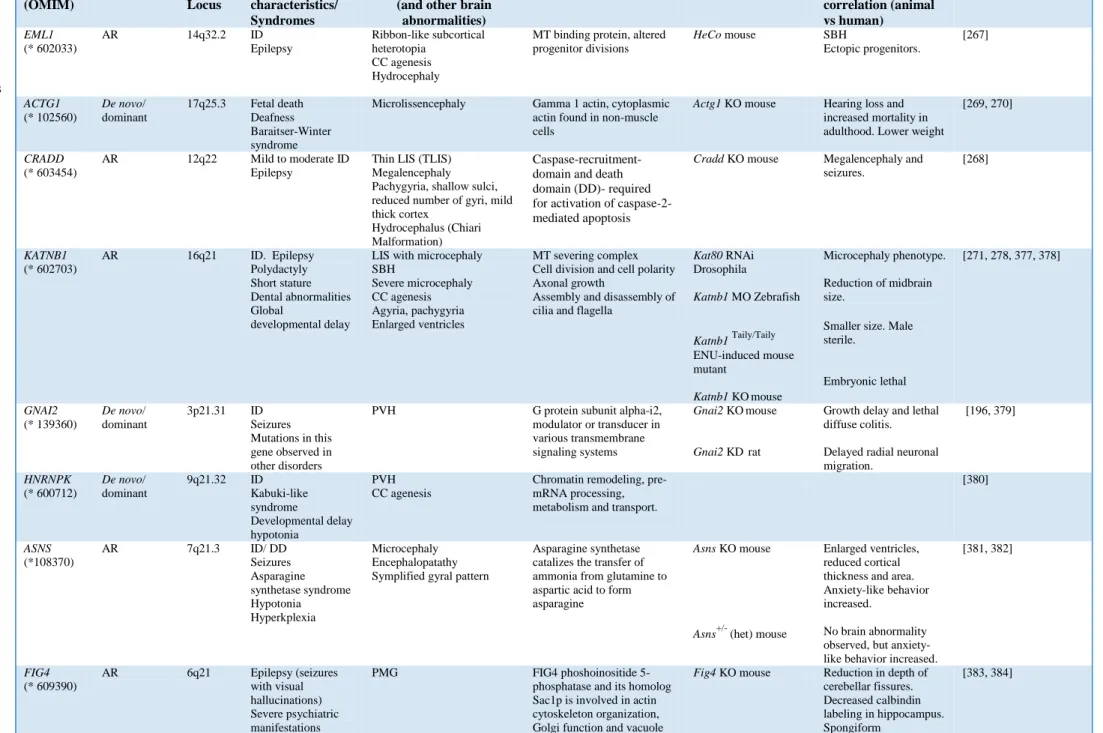HAL Id: hal-01626222
https://hal.sorbonne-universite.fr/hal-01626222
Submitted on 30 Oct 2017
HAL is a multi-disciplinary open access
archive for the deposit and dissemination of
sci-entific research documents, whether they are
pub-lished or not. The documents may come from
teaching and research institutions in France or
abroad, or from public or private research centers.
L’archive ouverte pluridisciplinaire HAL, est
destinée au dépôt et à la diffusion de documents
scientifiques de niveau recherche, publiés ou non,
émanant des établissements d’enseignement et de
recherche français ou étrangers, des laboratoires
publics ou privés.
Genetics and mechanisms leading to human cortical
malformations
Delfina Romero, Nadia Bahi-Buisson, Fiona Francis
To cite this version:
Delfina Romero, Nadia Bahi-Buisson, Fiona Francis.
Genetics and mechanisms leading to
hu-man cortical malformations.
Seminars in Cell and Developmental Biology, Elsevier, 2017,
�10.1016/j.semcdb.2017.09.031�. �hal-01626222�
1
Genetics and mechanisms leading to human cortical malformations
Delfina M. Romero
1-3, Nadia Bahi-Buisson
4-5, Fiona Francis
1-3 1INSERM UMR-S 839, 17 rue du Fer à Moulin, Paris 75005, France.
2Sorbonne Universités, Université Pierre et Marie Curie, 4 Place Jussieu, Paris 75005,
France.
3
